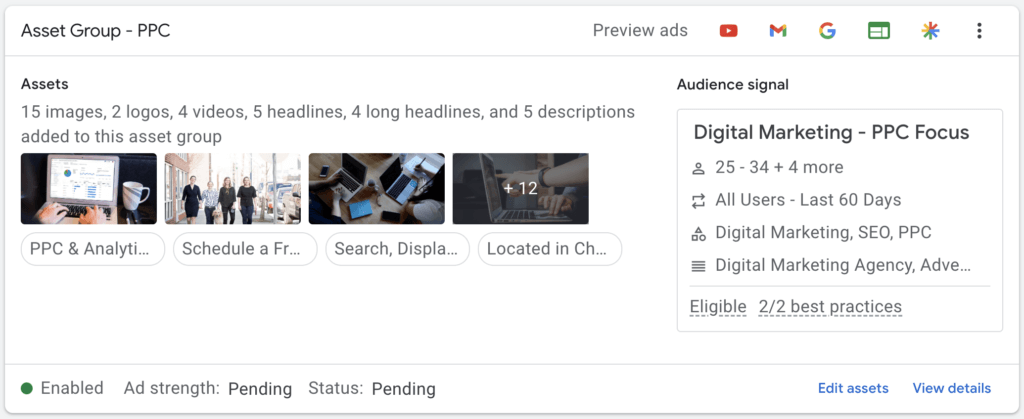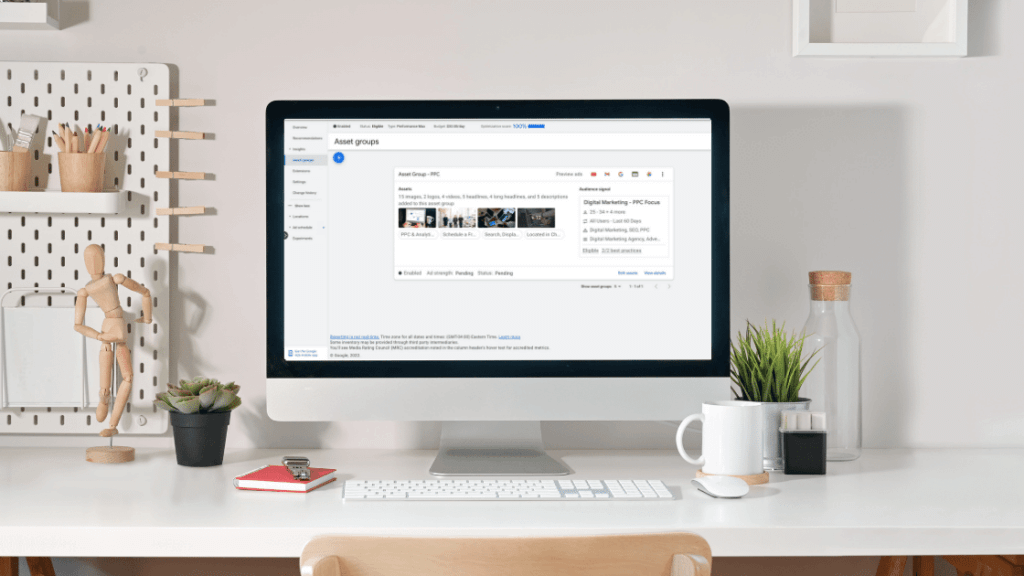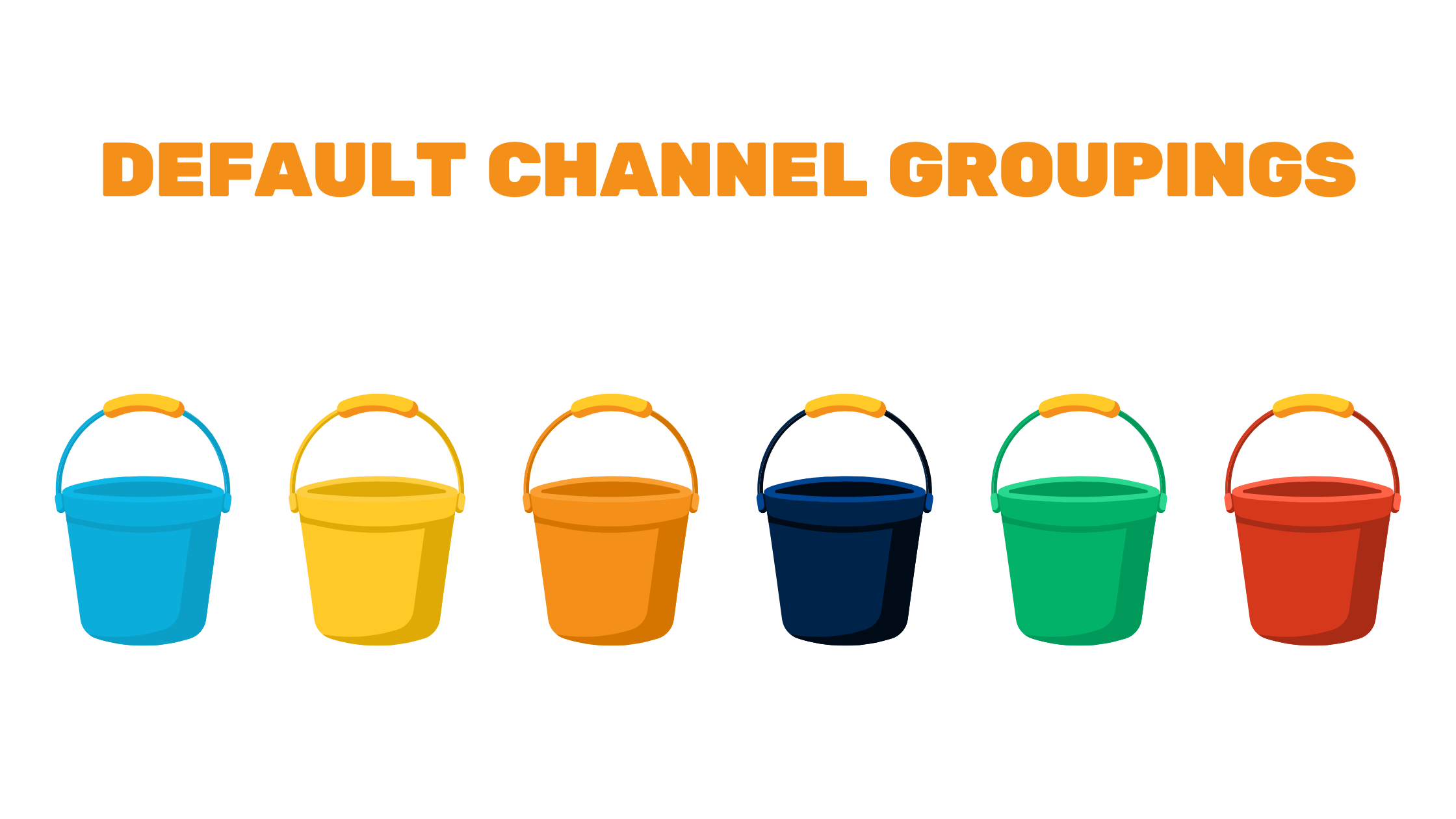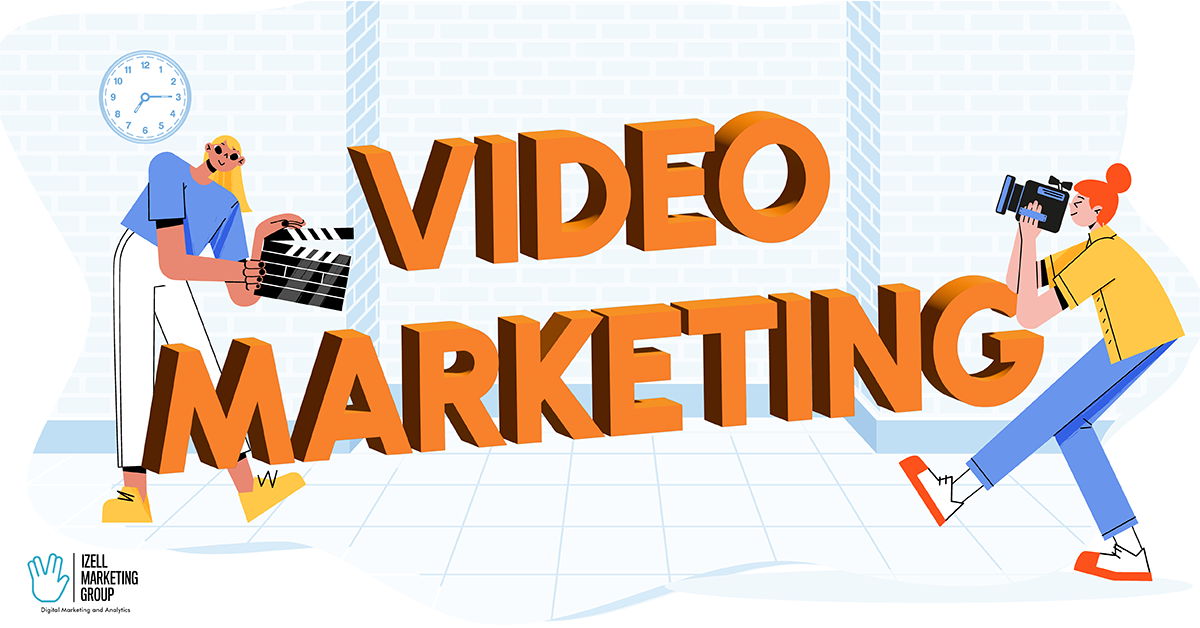Google Ads has been changing a lot over the last few years.
Let me get you caught up quickly:
Ever since Google launched Smart Campaigns circa 2018, they’ve speedily been pushing us away from any type of manual bidding campaign strategies. Smart Campaigns are now swiftly being taken over by Performance Max Campaigns.
Introducing: Performance Max
PERFORMANCE MAX! Google loves this campaign type. The idea behind this campaign type is that you no longer carefully craft ads, nor do you research and curate keyword lists. You perform what I lovingly call an “asset dump” into Asset Groups (the equivalent of Ad Groups). You load it up with variations on headlines, descriptions, images, videos, and ad extensions. Then, you define Audience Signals, which can include targeting keyword searches, in-market audiences, interest audiences, remarketing lists, customer lists, and more. Google uses these assets to serve campaigns across *all* properties that support Google Ads.

What Does This Mean?
For some, this can mean easy breezy advertising! I’ve seen Performance Max absolutely kill it for some, but it can also be lackluster for others.
The Biggest Problems
- There’s virtually no performance reporting to review. Google wants to optimize the campaign; they don’t seem to intend on having you optimize it.
- Performance Max is a catch-all campaign type. It does not tend to work as well for advertising specific product or service lines. More or less, its boundaries are unknown (to us).
What does this ultimately mean?
Use Performance Max campaigns when applicable, but absolutely stick to the core campaign types like Search Campaigns and Display Campaigns. Keep carefully curating keywords and building tightly themed ad groups for search. With little control over the success of your Performance Max campaign(s), you need to keep running campaigns you *can* control.
I’ll keep you updated on if/when we can put more faith in Performance Max.




